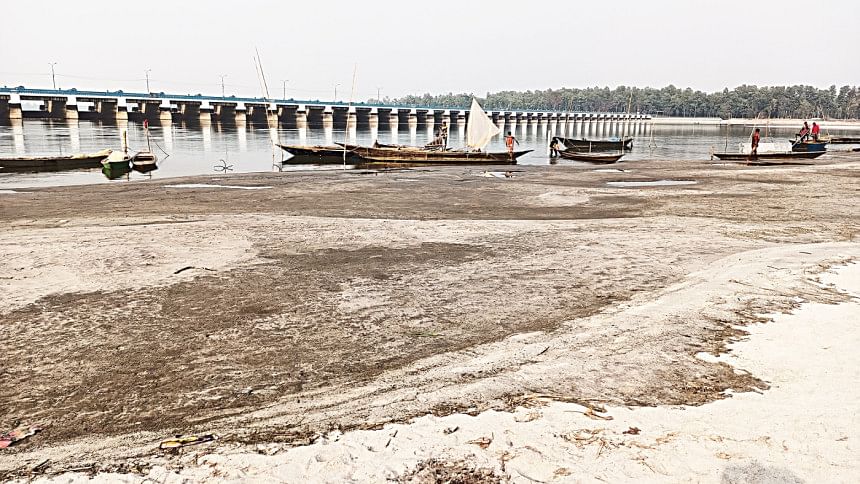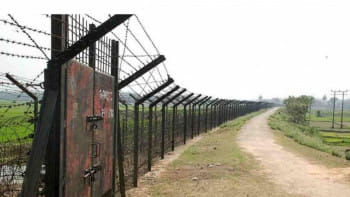Teesta plan with China gains pace

After years of delays and uncertainty, the long-awaited Teesta River project has finally resumed its initial work, bringing renewed hope to communities along its banks. The project, if implemented, will curb bank erosion, reclaim land, and store floodwater for use during the dry season.
On January 29, the Bangladesh Water Development Board (BWDB) and Chinese state-owned POWERCHINA signed an extension to a memorandum of understanding, pushing the Teesta Comprehensive Management and Restoration Project forward.
Under the deal, POWERCHINA will prepare a concept paper by December and conduct a feasibility study in 2026. After that, the Teesta project will be finalised, according to Environment Adviser Syeda Rizwana Hasan.
"We have agreed to give China two years to complete the two tasks under the project," Rizwana told The Daily Star.
While the project's financing remains uncertain, Rizwana said the final cost will depend on the feasibility study. "We certainly expect support from our development partners, and we hope China will step forward," she said.
Early estimates suggest the project could cost $1 billion.
A FRUSTRATING HISTORY OF NEGOTIATIONS
Bangladesh has struggled for years to secure an agreement with neighboring India on the sharing of Teesta River waters. An initial deal was finalised during the tenure of Indian Prime Minister Manmohan Singh and was scheduled to be signed in 2011. However, opposition from West Bengal Chief Minister Mamata Banerjee, who argued it would negatively impact water availability in her state, led to the deal's collapse.
Frustrated by the continued impasse, Bangladesh signed a non-binding MoU with POWERCHINA in 2016 to explore an alternative approach to managing the river's challenges.
At the time, POWERCHINA proposed a comprehensive river management plan, covering bank erosion control, flood management, disaster reduction, land reclamation, transportation, and ecosystem restoration. The initiative also aims to mitigate social and environmental impacts while fostering economic development in affected communities.
Key components of the project include dredging 140 million cubic metres of sediment, reclaiming 171 square kilometres of land, repairing 110 kilometres of embankment, constructing 124 kilometres of new embankments, and developing 224 kilometres of roads. The plan also envisions transportation and jetty facilities at 82 locations.
Currently, POWERCHINA is reviewing its original proposal before launching the feasibility study, according to an official at the Ministry of Water Resources.
THE RIVER'S DECLINE
The Teesta originates in Sikkim, India, and enters Bangladesh through Dimla Upazila in Nilphamari, eventually merging with the Brahmaputra River in Gaibandha. Of its 115-kilometre stretch in Bangladesh, 102 kilometers lie downstream of the Teesta Barrage, a key water control structure.
On November 14, Bangladesh recorded an upstream water flow of 2,800 cubic feet per second (cusecs), prompting the closure of all 44 gates of the barrage to conserve water for irrigation. However, on February 15, India suddenly increased its water release by 800 cusecs, forcing Bangladesh to open six gates to manage the flow.
Teesta water is crucial for farmers in northern Bangladesh, particularly between December and April. The river sustains irrigation for 55,000 hectares of rice fields across six districts: Nilphamari, Rangpur, Dinajpur, Bogura, Joypurhat and Gaibandha.
LOCALS CONTINUE TO SUFFER
Alal Uddin, a 70-year-old farmer from Gaddimari village, five kilometers downstream of the Teesta Barrage, painted a bleak picture.
"There is some water upstream, but the downstream is completely dry," he told The Daily Star.
Nur Islam, a boatman from Aditmari Upazila in Lalmonirhat, shared a similar plight.
"I have no livelihood in the dry season because I cannot operate my boat due to the lack of water," he said.
The situation has deteriorated over the years. With India unilaterally diverting Teesta's waters and constructing multiple upstream projects in Sikkim and West Bengal, Bangladesh has faced worsening seasonal shortages. The riverbed is now filled with sand, making the region more vulnerable to flash floods and severe erosion during the monsoon.
Last week, Adviser Rizwana visited the Teesta region and held a public hearing in Kaunia, Rangpur.
"The interim government is prioritising the Teesta Mega Plan to address the struggles of riverine communities," she said. "We have signed an agreement with China, and the project will be implemented with input from the people who live here."


 For all latest news, follow The Daily Star's Google News channel.
For all latest news, follow The Daily Star's Google News channel. 






Comments